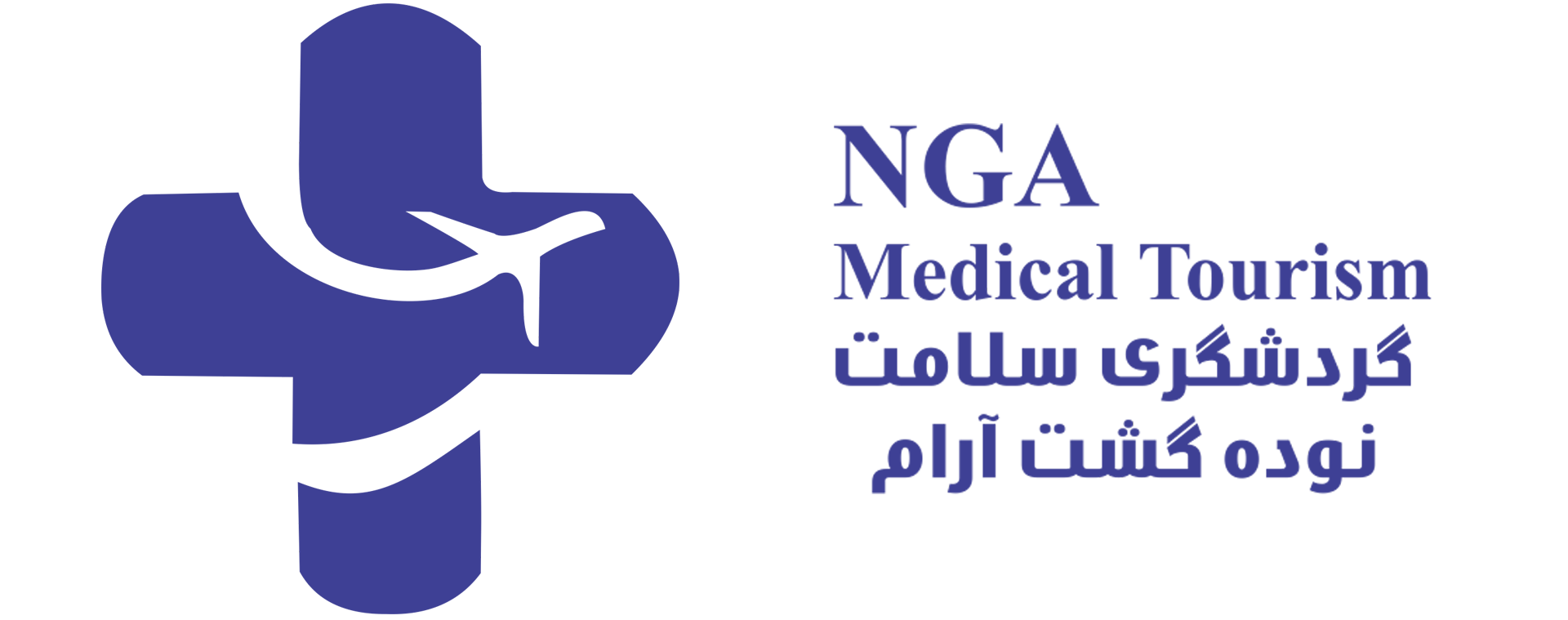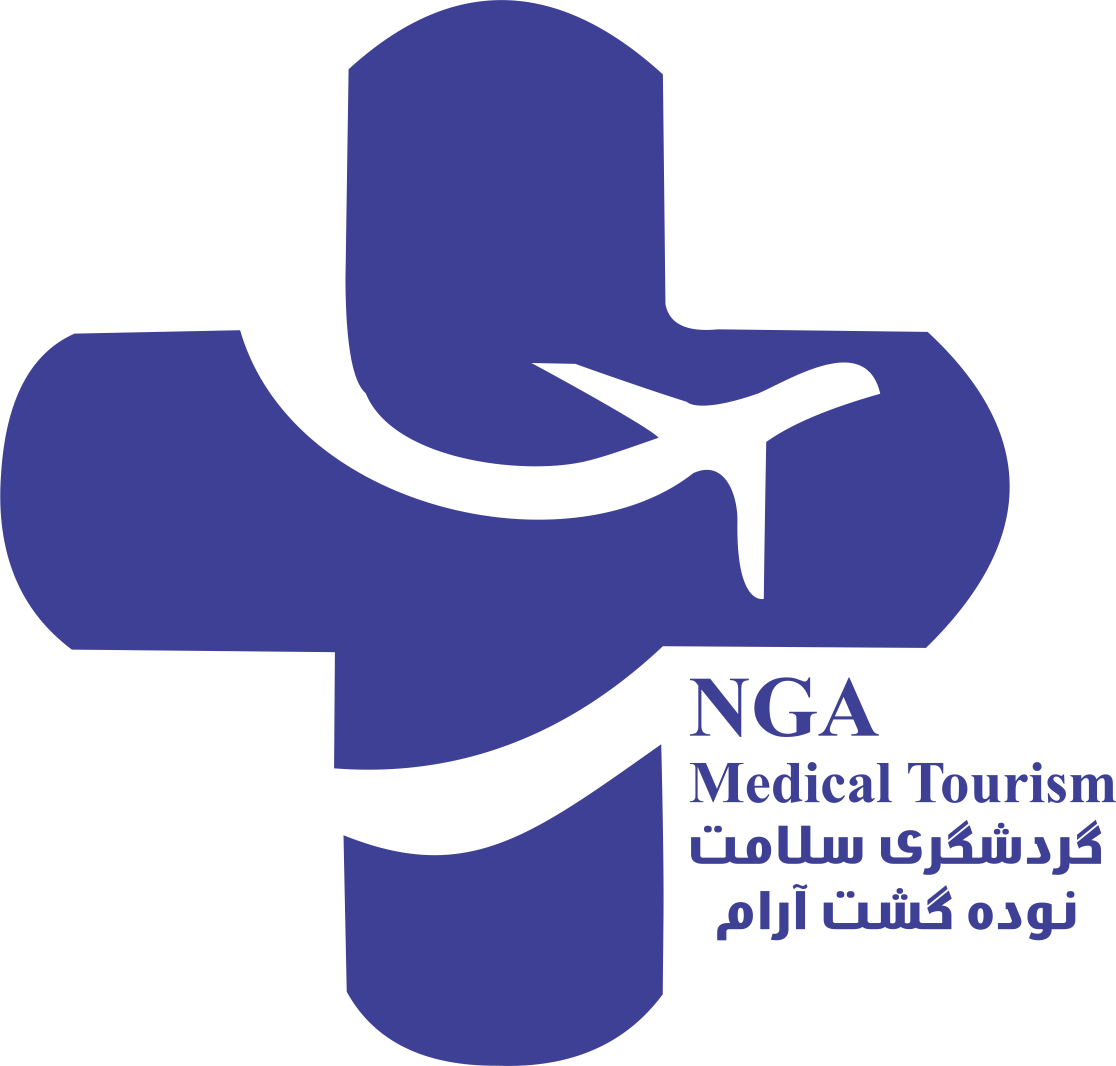- 7 June, 2023
- blog
The best nose shape
IRAN: The Ultimate Destination for Nose Jobs
Are you considering a nose job to enhance or reshape your nose? Look no further than Iran, the global epicenter for nose reshaping procedures, where you can achieve the nose shape you desire. Iran is celebrated for its highly skilled cosmetic surgeons, state-of-the-art clinics, and world-class hospitals, making it the ultimate destination for individuals seeking cosmetic surgeries, especially those related to nose shapes.
One of the significant advantages of choosing Iran for your nose job is the substantial cost savings. Iran offers affordable daily expenses and favorable exchange rates, making it a cost-effective choice for your rhinoplasty. Importantly, this affordability does not compromise the quality of healthcare services you receive. Iranian medical professionals are renowned for their exceptional care, which consistently surpasses the standards of other Middle Eastern countries.
Whether you require reconstructive surgery due to trauma, need to address breathing difficulties, or simply wish to transform your nose’s appearance, Iran should be your top consideration for rhinoplasty abroad. Skilled Iranian surgeons have the expertise to meet your expectations and help you achieve the nose shape you’ve always desired, thereby restoring facial harmony. Don’t miss the opportunity to experience the artistry of Iranian surgeons in shaping nose shapes to perfection.
Closed Rhinoplasty
Closed rhinoplasty, a surgical method commonly used for reshaping nose shapes, involves making all the necessary incisions inside the nose. This approach results in internal scars, which means that patients experience minimal swelling and scarring after the surgery. The key benefit of this technique is the discreet and hidden scar it produces, as the incisions remain invisible externally. By utilizing the internal approach, the surgeon can access and modify the nasal structures while greatly reducing the potential for visible scarring and shortening the patient’s recovery time.
Open rhinoplasty involves an incision between the nostrils for better access to nasal structures, allowing precise correction but leaving a small scar. This scar fades over time. Benefits include surgical precision and addressing complex deformities, with the technique chosen based on individual anatomy and goals.
Who Can Benefit from Nose Job in Iran?
With the remarkable progress in science and technology, plastic surgeries, including nose jobs, have become accessible to a wide range of individuals. However, in Iran, certain factors must be considered before undergoing a nose job:
- Age: Typically, individuals between the ages of 18 and 60 are eligible for nose surgery.
- Physical and Mental Health: Candidates should be in good overall health, both physically and mentally.
- Respiratory Health: It is important not to have pneumonia or any respiratory diseases that may affect the surgery.
- Pregnancy: Nose surgery is not recommended for pregnant individuals.
- Smoking and Alcohol Consumption: It is advised to be a non-smoker and have moderate alcohol intake.
- Heart Disease and Diabetes: Candidates should not have significant heart disease or uncontrolled diabetes.
These factors are taken into consideration to ensure the safety and successful outcome of the nose job procedure. Consulting with a qualified surgeon is crucial to determine if one meets the necessary criteria for undergoing a nose job in Iran.
Iranian rhinoplasty surgeons, including renowned doctors like Dr. Mohammad Hossein Baradaranfar, Dr. Omid Sabet Mehr, Dr. Mohammad Ali Aghaei, and Dr. Atighechi, have obtained their degrees from top universities and possess extensive experience in handling diverse nose shapes. Performing numerous surgeries each month, some surgeons have gained significant popularity and can even conduct up to five operations in a single day.
These skilled Iranian surgeons have developed expertise in specific nose jobs, such as fantasy nose surgeries. They cater to patients of various ages, ranging from 17 to 50 years old. These surgeons prioritize patient consultation, dedicating ample time to understanding their desires and concerns. They provide expert advice on the most suitable approach to reshape the nose, ensuring it aligns with aesthetic standards and complements the overall facial features.
By combining their exceptional qualifications, experience, and patient-centered approach, Iranian rhinoplasty surgeons strive to deliver satisfactory results and help individuals achieve their desired nose aesthetics.
Preparing for rhinoplasty
Before a nose job, follow these guidelines for a safe procedure:
- Avoid makeup on surgery day.
- Shave your face.
- Complete required lab tests and X-rays.
- Stop blood thinners, anti-inflammatory drugs, and supplements.
- Avoid smoking and alcohol for two weeks.
- Fast for eight hours before surgery.
- Take a pre-surgery bath.
- Cease vitamin E supplements one week before.
These precautions are essential for a successful and safe rhinoplasty.
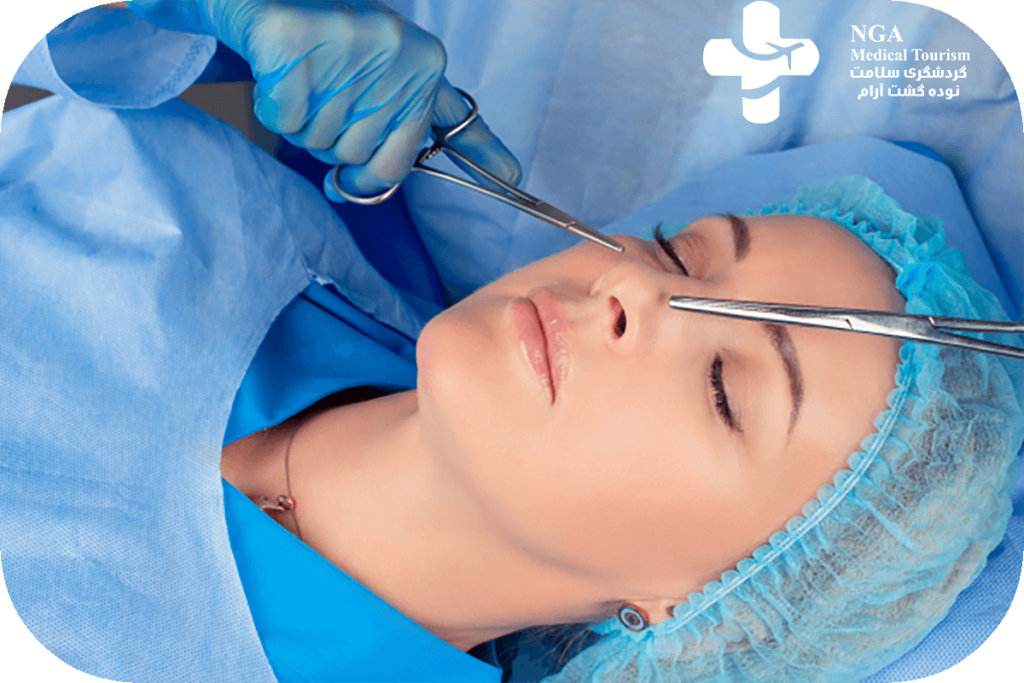
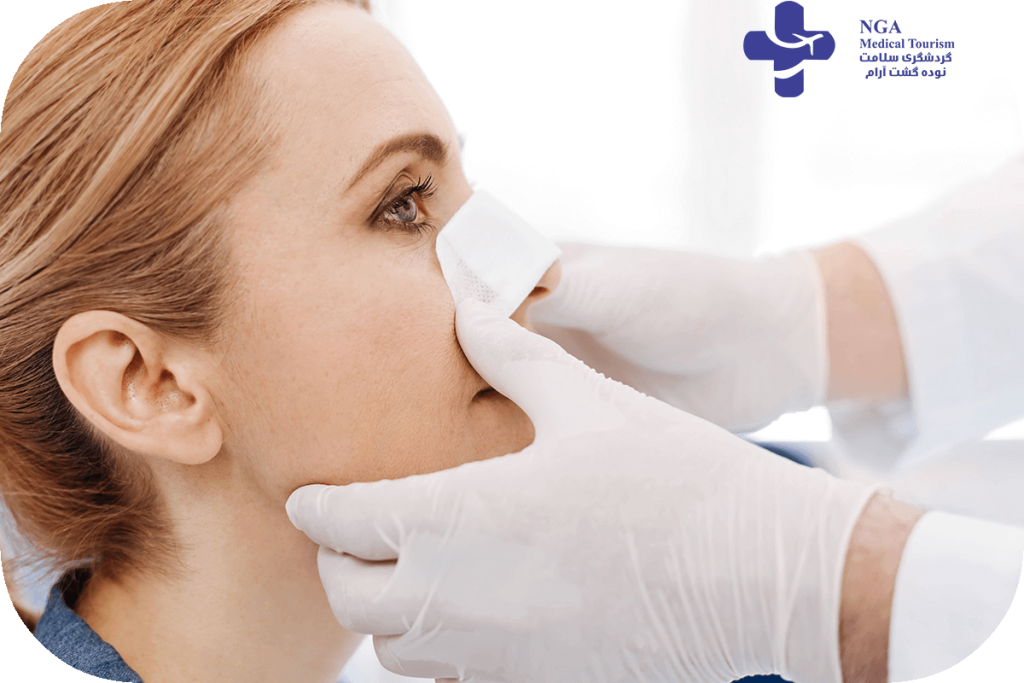
How to Take Care of the Nose after Rhinoplasty?
When planning a nose job in Iran, communication with your surgeon is vital. Three common nose styles are natural, fantasy, and semi-fantasy. Natural focuses on maintaining regular shape, fantasy aims for a smaller, upward-tipped nose, and semi-fantasy combines elements of both. Choose a style based on your facial features and goals while ensuring proportionality and nostril size to avoid breathing issues. Consulting with your surgeon ensures the best rhinoplasty results in Iran.
When considering rhinoplasty, follow these steps:
Find an experienced and skilled surgeon known for their aesthetic sense.
Simplify the process by seeking assistance with the medical visa application.
Ensure comfortable accommodation for your recovery period.
For patients traveling to Iran, IPD Tourism . offers comprehensive services, including visa assistance, hotel bookings, and appointments with top rhinoplasty surgeons. They can also assist with pre-booking blood tests and provide support for patients worldwide. With their help, you can have a seamless and convenient experience during your nose surgery journey in Iran.
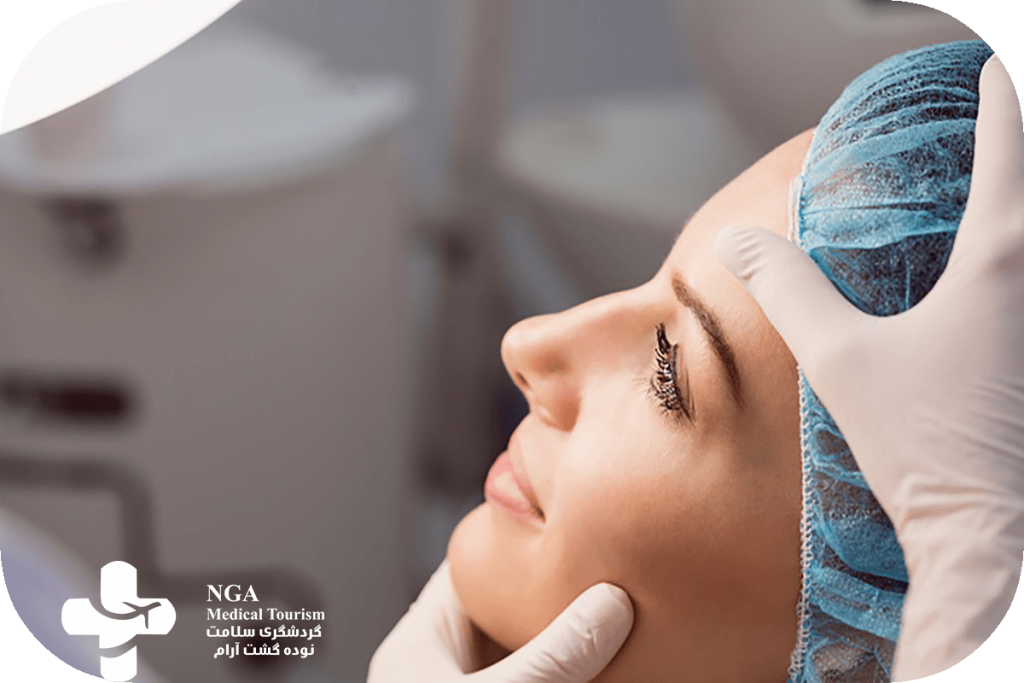

Possible Complications of Nose Job
Selecting a skilled surgeon reduces severe complications in rhinoplasty. Potential side effects include bleeding, scarring, numbness, infection, anesthesia-related issues, breathing difficulties, pain, swelling, septal perforation, eye bruising, and excessive tearing. These are often temporary and manageable with post-operative care and follow-up appointments. Discuss concerns with your surgeon before the procedure.
Fleshy nose shape
A “nose shape,” commonly known as a fleshy, wide, or meaty nose, is characterized by weak cartilage, thick skin, a low nasal bridge, and wide nostrils. The length of this nose type can vary depending on the underlying bony structure, which may be either short or long. It’s a prevalent nasal shape worldwide, with approximately 25% of the global population having this type of nose.
Button nose shape
The “nose shapes,” often referred to as celestial or turned-up noses, are characterized by a short, flat, and round shape. These noses give the face a rounder and cuter appearance, making them particularly desirable for women. They are considered the most attractive form of the nose and feature a short bridge, adding to their unique and appealing aesthetic.
Roman nose shape
The “nose shape,” known as the Roman or aquiline nose, is characterized by a high, prominent, and curved bridge. However, unlike other nose shapes, the tip of the Roman nose points downward. This type of nose derives its name from the resemblance to the nasal form depicted in ancient Roman sculptures. It is often considered a distinctive and strong feature.
Greek nose shape
The Greek nose, often referred to as the straight nose, is characterized by its straight and smooth profile. Unlike the Roman nose, it lacks any crookedness, humps, or curves. This nasal shape is named after the sculptures of Greek gods, who were commonly depicted with straight noses. The Greek nose is admired for its symmetrical and harmonious appearance.
Bumpy nose shape
Many rhinoplasty candidates have bumpy noses due to excess bone or cartilage on the nasal bridge, often from prior damage. Plastic surgeons offer standard or liquid rhinoplasty procedures to reshape and smooth the bridge, creating a refined and harmonious nasal appearance based on the severity of the issue.
Snub nose shape
That’s correct. A snub nose, also known as a pug nose or upturned nose, is characterized by a short nasal bridge and a rounded or upturned tip. One distinctive feature of a snub nose is that the nostrils are often visible due to the upward tilt of the tip. This gives the nose a cute and button-like appearance. It is important to note the slight difference between a snub nose and a button nose, as the visibility of nostrils is more commonly associated with snub noses.
Hawk nose shape
That’s correct. The hawk nose, also referred to as a beak nose or eagle-like nose, is characterized by a prominent, curved bridge and an elevated tip. It shares similarities with the Roman nose in terms of its dramatic curve and high bridge. However, the hawk nose typically has a thinner bridge and a more pronounced elevation of the tip, resembling the beak of a predatory bird. This unique nasal shape adds a distinctive and striking feature to the face.
Nubian nose shape
The Nubian or African nose features a long, low bridge, wide base, downward curve, and wide nostrils, common among individuals of African descent. Rhinoplasty for this nose type is complex due to the need to manipulate bone and cartilage for a stronger, defined shape. The goal is to enhance its appearance while preserving its ethnic traits, requiring skilled surgeons experienced in ethnic rhinoplasty to achieve desired results.
East Asian nose shape
The East Asian nose is characterized by a low dorsum, bulbous tip, short bridge, and thick skin, often accompanying East Asian facial features. Many East Asians opt for rhinoplasty to achieve a more harmonious nose shape with broader and longer proportions. These procedures involve refining the bridge and tip while considering individual facial proportions, and experienced surgeons can maintain ethnic features while achieving desired results.
Bulbous nose shape
A bulbous nose is characterized by a round, prominent tip, often influenced by genetics or cartilage damage. Rhinoplasty can reshape the tip using techniques like cartilage restructuring, suturing, and tissue removal, achieving a more balanced and attractive appearance, as seen in actor Leo McKern’s case. Skilled surgeons customize the procedure to meet individual needs.
Combo nose shape
A combo nose combines traits from multiple nose shapes. If your nose doesn’t fit a specific category, consult a skilled plastic surgeon for a personalized rhinoplasty plan tailored to your unique features and goals. The surgeon will assess your nose and create a custom treatment approach.
L shaped nose ring
An L-shaped nose ring is a type of nose piercing jewelry. It has a unique L-shaped design, with a straight post that goes through the piercing and a small L-shaped bend at the end to hold it in place. This design offers stability and comfort while keeping the jewelry securely in the nose piercing.
button nose shape
A button nose shape is characterized by a small, cute, and rounded nasal tip with a gentle upward curve. It often appears petite and harmonious with the facial features. This nose shape is typically associated with a youthful and charming appearance.
Bony nose surgery
Nose shapes play a significant role in bony nose surgery, also known as osteorhinoplasty. This procedure primarily aims to reshape the nasal bone structure. It may involve reducing or augmenting bone to achieve the desired nasal aesthetics and function while addressing issues such as humps or fractures. The ultimate goal of this surgical procedure is to create a more balanced and harmonious nose shape.
fleshy nose surgery
Nose shapes are a critical consideration in fleshy nose surgery, also known as rhinoplasty for a bulbous or thick-skinned nose. The primary goal of this procedure is to refine and reshape the nasal tip and bridge. It typically involves techniques to reduce excess tissue and create a more defined and proportionate nose, addressing characteristics like a wide or rounded nasal tip. Skilled surgeons tailor the procedure to individual needs while preserving ethnic features.
Common Iranian nose shapes job
Natural nose job
In “natural” rhinoplasty, the emphasis lies in achieving subtle changes that result in a harmonious appearance of the nose. It aims for a straight nasal bridge, avoids excessive tip rotation, and maintains a balanced relationship with the upper lip. The goal is to create a refined and balanced nose that blends seamlessly with the individual’s face, without giving the impression of being overly artificial, taking into account different nose shapes.
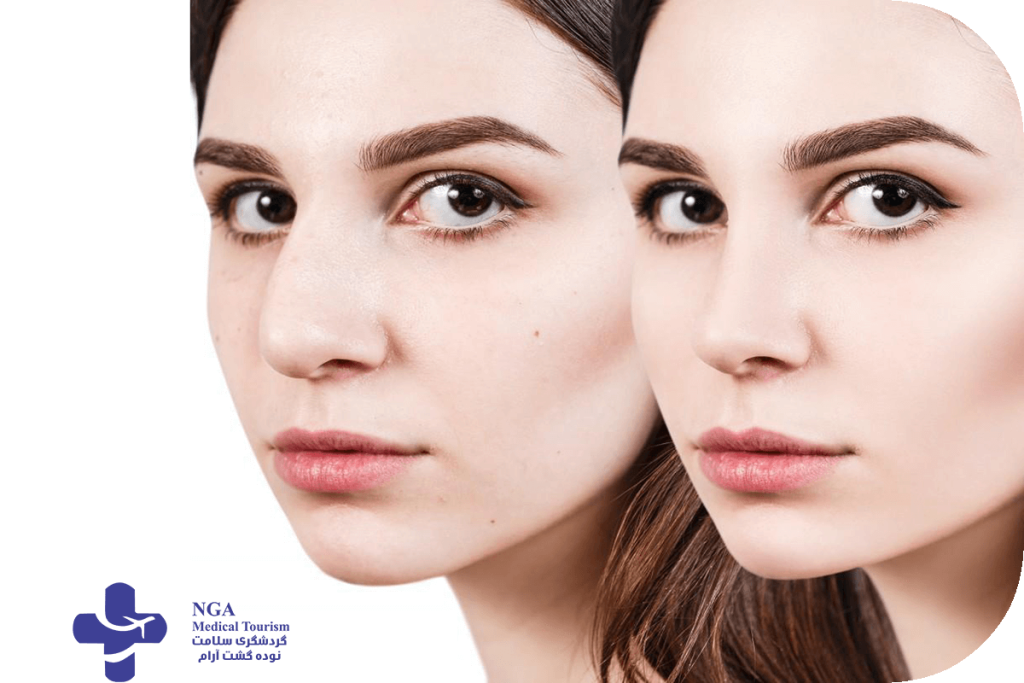
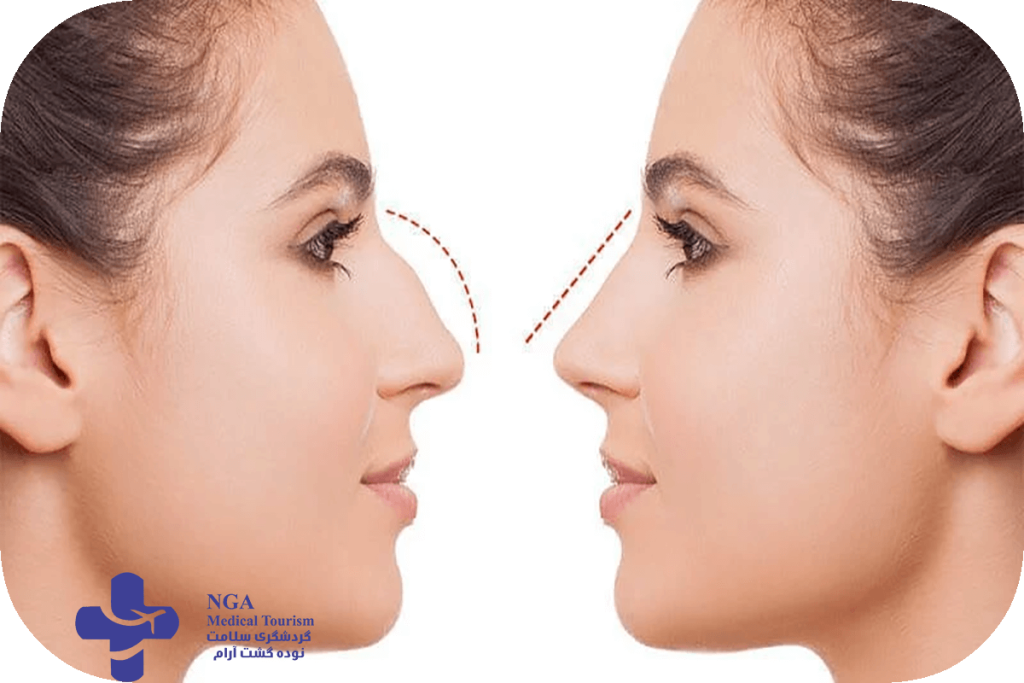
‘Natural’ style for bony noses
Bony noses with dorsal humps can be ideal candidates for the “natural” style of rhinoplasty. This approach concentrates on making subtle changes to establish a harmonious appearance, typically by reducing the hump and achieving a smoother nasal bridge. It is important to preserve the nose’s inherent characteristics and maintain a natural look, accommodating various nose shapes.
‘Natural’ style for fleshy noses
Fleshy noses are often suitable for the “natural” style of rhinoplasty, which aims for subtle changes while maintaining a natural look. This approach focuses on refining the sides and reshaping the nasal tip to create a more proportional appearance. It’s chosen because it considers the limitations of thicker skin and weaker cartilage, using techniques to support the nose’s structure for a harmonious and unoperated appearance.
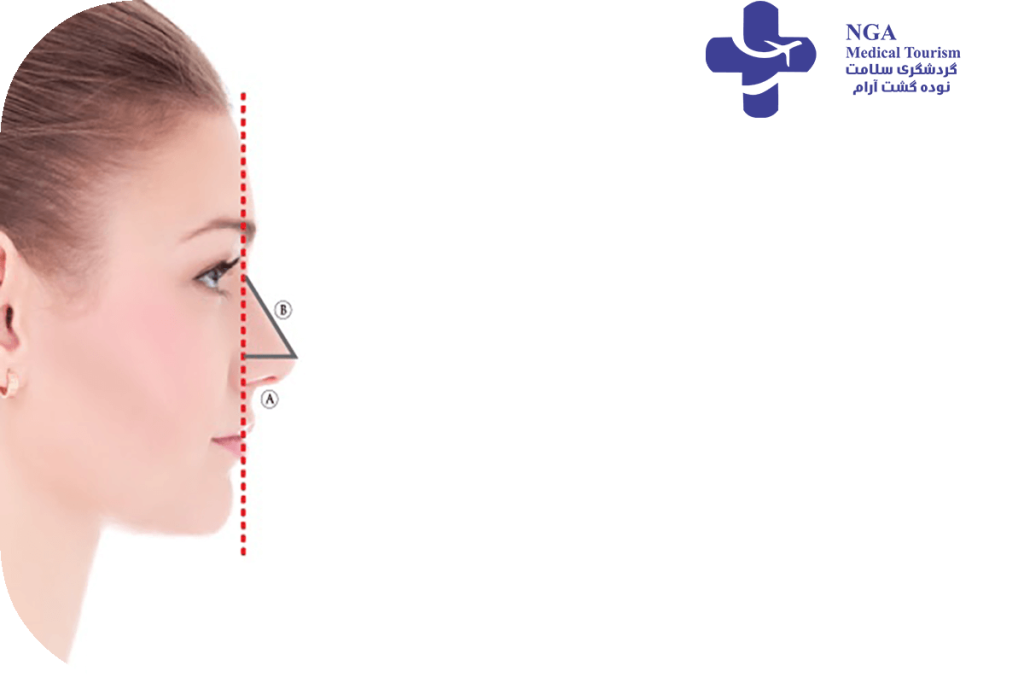

Fantasy nose job (dolly nose)
A “dolly” or “fantasy” nose, commonly referred to as a “dolly nose” in Iran, is a small and upturned nose with a distinctive ski jump or snub shape. This style of rhinoplasty aims to create a petite nose with an upturned tip, typically more suitable for individuals with bony noses due to their thinner skin allowing for better definition.
“Dolly nose” surgery is favored by those with small faces to achieve a harmonious and aesthetically pleasing appearance. However, individual facial proportions and expectations should be discussed with the surgeon to ensure the desired outcome complements overall facial features.
Semi-fantasy nose job
The “semi-fantasy” nose job style combines elements from both “natural” and “fantasy” styles. It features a slightly curved bridge, less pronounced than in a fantasy nose, and a narrower angle between the nose and upper lip. The choice between these styles is influenced by individual preferences, with fantasy and semi-fantasy styles being more popular among women. Success depends on the surgeon’s skill, patient’s unique nose characteristics, and desired outcome. Consult with an experienced surgeon to determine the most suitable style for your aesthetic goals.
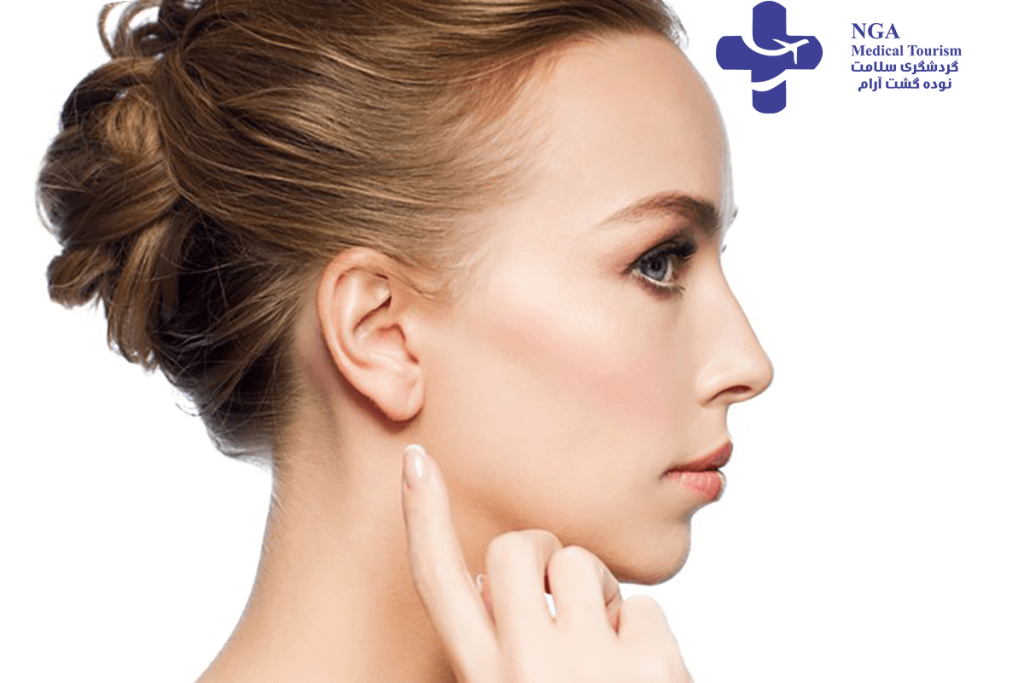
In revision rhinoplasty, also known as secondary rhinoplasty, a second or subsequent nose surgery is performed to correct issues or make improvements after a previous unsuccessful nose job. IPD Tourism collaborates with experienced rhinoplasty surgeons in Iran to offer guaranteed rhinoplasty services. If the result of the initial surgery is unsatisfactory due to medical malpractice, patients are provided with a revision surgery and all related travel services free of charge.
It is important to wait a sufficient amount of time after the previous surgery before undergoing revision rhinoplasty. Rushing into the procedure can potentially worsen the situation. It is generally recommended to wait at least 10-12 months after the initial rhinoplasty, allowing the nose to fully heal and take its final shape. This timeline accounts for the reduction of swelling, which typically takes about a year to subside.
Three Reasons Why You Should Do Nose Job in Iran
Experience
Iran is known for its highly skilled and experienced plastic surgeons who specialize in rhinoplasty, offering patients a wealth of expertise in the field.
Modern Facilities
Many clinics and hospitals in Iran are equipped with state-of-the-art technology and facilities, ensuring safe and advanced surgical procedures.
Affordability
Rhinoplasty in Iran is often more affordable than in many Western countries, making it an attractive option for those seeking high-quality cosmetic surgery on a budget.
Factors Influencing the Cost of Nose Jobs in Iran
Choosing an experienced surgeon and qualified hospital is crucial for rhinoplasty in Iran. With highly skilled plastic surgeons and advanced medical technologies, Iran offers affordable nose job prices ranging from $1,200 to $2,500. Trust the expertise of Iranian surgeons and the state-of-the-art facilities for a transformative rhinoplasty experience. The cost of rhinoplasty in Iran is quite competitive, making it an attractive option for those seeking quality surgical procedures at a reasonable price.
Read More: Lasik eye surgery in Iran Question and Answer
Read More: Eye Surgery cost in Iran (Lasik&Refractive Surgery,Cataract)
Read More: lasik Eye Surgery in Iran
Read More: Glaucoma Treatment In Iran
Read More: Cataract surgery in Iran
After undergoing rhinoplasty, you can expect to experience mild pain in the nasal area. This discomfort can typically be managed with over-the-counter pain relievers such as paracetamol.
It usually takes around a year for the swelling to fully subside and for you to see the final results of your nose job. Patience is key during the recovery process.
The timeframe for returning to work will depend on the complexity of your nose surgery. In general, most individuals can resume work after one to two weeks. However, if your job involves strenuous physical activities, it’s advisable to consult with your surgeon to determine the appropriate time to return to work.
Rhinoplasty is typically performed as an outpatient procedure and typically takes around two to three hours to complete. Following the surgery, you will be transferred to the recovery ward and regain consciousness within approximately an hour.
Yes, the results of a nose job are generally considered to be permanent. However, in some cases where there are complications or a patient experiences severe breathing difficulties, a revision rhinoplasty may be necessary to address these concerns. It’s important to maintain regular follow-up appointments with your surgeon to ensure optimal results and address any potential issues.
Choose our highly skilled and experienced board-certified rhinoplasty surgeons in Iran for a safe and satisfactory nose surgery. With a minimum of 12 years of experience and over 5000 successful surgeries each, they possess the expertise to handle complexities and prioritize your goals.
Yes, in general, the results of a rhinoplasty procedure are considered permanent. After approximately one year, when the swelling has fully subsided and the nose has healed, the nose is expected to maintain its final shape. It is important to note that individual experiences may vary, and factors such as natural aging processes or significant changes in weight can potentially affect the long-term appearance of the nose. However, the initial changes made during rhinoplasty are intended to be long-lasting, providing you with a nose that aligns with your desired outcome for the foreseeable future.
Non-surgical rhinoplasty is a procedure where fillers are injected into the nose to reshape it temporarily. Unlike surgical rhinoplasty, the results of non-surgical rhinoplasty are not permanent as the fillers gradually break down and are absorbed by the body. The effects typically last between 6 months to 2 years. It is a suitable option for individuals seeking minor changes to their nose without undergoing surgery. Consulting with a qualified provider is important to understand the limitations, risks, and expected duration of the results.
The duration of a rhinoplasty surgery can vary depending on factors such as the complexity of the procedure, the specific techniques employed by the surgeon, and the individual characteristics of the patient’s nose. On average, a rhinoplasty surgery typically lasts between 1 to 3 hours. However, it’s important to note that the actual duration can vary and should be discussed with the surgeon during the consultation.
Closed rhinoplasty: No visible scarring as incisions are made inside the nostrils.
Open rhinoplasty: Small scar on the columella, visibility depends on surgeon’s skill and individual’s skin type.
Anti-scar ointments and gels can help reduce scarring.
Overall, scarring is usually minimal and fades over time.
